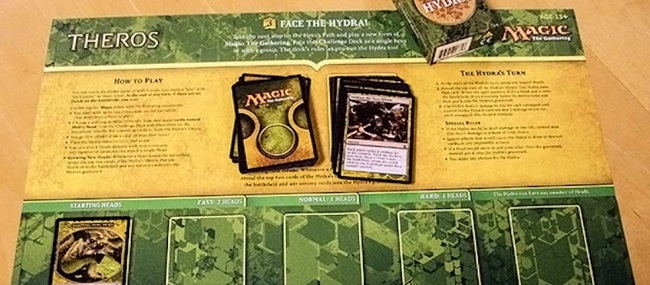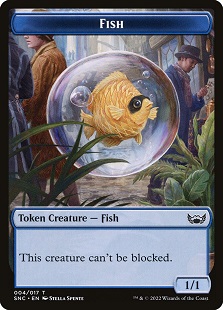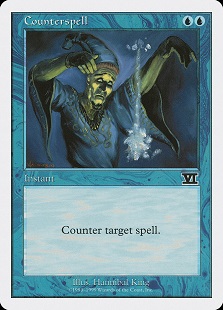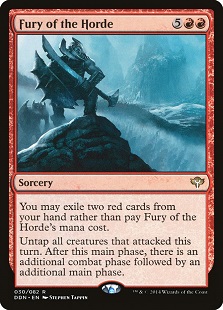Hello World!
Ok, now that I've gotten that antiquated reference out of the way, allow me to formally introduce myself. My name is Sig Ausfresser, and I've been a Magic: The Gathering player since 1997, back when Visions and Fifth Edition were the latest sets. Yes, that makes me old.
It also makes me familiar with the game years before the advent of online play via Magic Arena (2019) and even before Magic Online (2002). I played casually during a time when the only options for play was the one or two friends I knew who also occasionally played the game. I was in middle school at the time, meaning I had no easy access to transportation...or money. If I wasn't over at one of their houses, I had no one to play with, until my brother learned a little later.
How did I get my Magic fix when I wanted to jam a game or two? I could only build and rebuild my decks so many times before testing them out, so I had to develop some creative approaches to gameplay. With this background, I wanted to touch on five different ways that Magic: The Gathering can be played solo, listed in order of complexity, in case others find themselves in the same boat as I did.
Option 1: Goldfishing
The most basic approach to playing Magic solo is via the common practice of goldfishing. To play, you simply draw your hand of seven cards as you would during a normal game of Magic. Then, you proceed to unleash your creatures and fire off your spells, one turn at a time, under the assumption your opponent is doing nothing on the other side of the table. In essence, you are assuming your opponent is a helpless goldfish.
The intent of this gameplay is to familiarize yourself with the kinds of draws your deck will yield and how you should expect the first few turns of a game to unfold. If you want to add a level of difficulty without giving yourself a headache, you could add a rule that states that every so often, your opponent casts a simple spell. Popular choices include Wrath of God, Thoughtseize, or even Austere Command. Whatever disruption would interrupt your strategy most, as this is meant to challenge you and improve how you play when your opponents interact with your strategy.
Option 2: You Are Your Opponent
I did my share of goldfishing back in the late 90s, but the most frequent way I played Magic solo was by shuffling up two decks and battling them against each other by myself. It's kind of like playing open-handed, only you know the strategies and game plans for each deck since you're making all the decisions.
This approach is much more rigorous than goldfishing in that each game will yield different interactions and decision points. Additionally, you know the goals of each deck, so you can ensure both decks are doing everything in their power to win while also disrupting the other side. I've found that solo gameplay is still a bit simplistic - for example, Counterspells don't really feel natural when you're deliberately playing into them.
Still, if you're looking to test how a deck performs against an actual opponent but you're alone on a random Tuesday night, playing two decks against each other can be both fun and informative.
Option 3: Garruk the Slayer
Sometimes, you only want to test one deck out. Other times, you don't want to deal with the logistics of managing two decks, but you still want the experience of battling an opponent. There is another option worth considering: Garruk the Slayer!

In Magic 2015, a giant Garruk the Slayer card was included in every Prerelease box. If you're familiar with Planeswalker cards, then this will be a relatively easy way to play a solo game of Magic.
The rules are simple: You build your deck as normal and your imaginary "opponent" (i.e., also you) play as Garruk the Slayer. Just like a normal Planeswalker, Garruk can be attacked or targeted just like a player would, and when his life total, aka loyalty, reaches zero, you win! Once a turn, Garruk can create a 2/2 wolf, pump up a wolf and give it deathtouch, destroy a creature, or destroy all creatures not under Garruk's control (hello Plague Wind!).
Gameplay isn't perfect, because you still have to make all the decisions for Garruk when you're playing alone, but it adds a little diversity to an otherwise mundane way of playing Magic alone. I'd recommend skipping over cards like Eliminate, as that kind of defeats the purpose of the game!
Option 4: Challenge Decks
I'll admit I was unfamiliar with this style of gameplay until I did research for this article. Apparently, Wizards of the Coast released special preconstructed, self-running decks with their own set of rules alongside Theros block. These decks run similarly to how a typical game of Magic is played, only the objective of the game is to meet the challenge's win condition.

It was meant to be something enjoyed as a group in a casual multiplayer game, but it stands up decently when playing solo as well. For example, in Face the Hydra, the goal is to eliminate all the Hydra heads before it eats you. Sometimes the heads grow back, adding a layer of difficulty to the game. Unlike the other solo gameplay options, Challenge Decks include their own set of cards that are cast randomly by the opponent, adding a degree of unpredictability to the game. This is more akin to a normal game of Magic, where you don't know what your opponent may be doing at all times.
There are additional rules and recommendations online - if you're interested, you can read more into these decks and find the one that resonates most.
Option 5: Mana Maze Solitaire, Battle Against the Horde, Etc.
On the most complex end of the spectrum, we have games like Mana Maze Solitaire and Battle Against the Horde. The latter is a spin on the Challenge Decks, only the decks themselves aren't required. Basically, you pre-build a "deck" of cards containing creatures and interactive spells. On your "opponent's" turn, you flip over one of their cards and it is automatically cast. The objective is to destroy all the cards in their deck, though I'd imagine you can modify this and use life totals however you see fit.
There are more details on how to configure the Horde's deck, and you can read about it here. What I like about this option is it seems infinitely customizable in terms of difficulty level and what you choose to include in the "opponent's" group of cards. The key is that you want to minimize the number of choices that need to be made by the Horde; ideally that number is zero.
The former is a cross of solitaire and Magic, created by Mark Rosewater many years ago, as a way to enjoy Magic without an opponent. The rules seem fairly lengthy, and the objective of the game varies - you can read more about it on Rosewater's Blogatog if you're curious to give it a try.
Wrapping It Up
I'd be remiss if I didn't at least give honorable mention to all the digital ways to play Magic. Today, there are a multitude of options ranging from Xbox video games to online instances, Magic Online and Magic Arena. Back in the late 90s, none of these options were available, but there was one digital version of the game I played by myself, over and over again...

Image Source: https://www.belloflostsouls.net/2023/09/magic-the-gathering-shandalar-is-the-most-fun-way-to-play-mtg.html
The game was called Shandalar, and it was a brilliant mix of role playing, strategy, and Magic rolled in one! You could play through the campaigns, or you could build your own decks to battle against the computer. While the AI wasn't sophisticated at the time and often blundered through complex board states, the game still offered repeatable, challenging, and entertaining games of Magic without requiring another person.
If you'd prefer to stick to the analogue style of Magic, playing with physical cards rather than their digital counterparts, then the options I covered above are likely your best bet...at least, until Wizards of the Coast (or a superfan) comes up with a whole new way of enjoying the game.





























